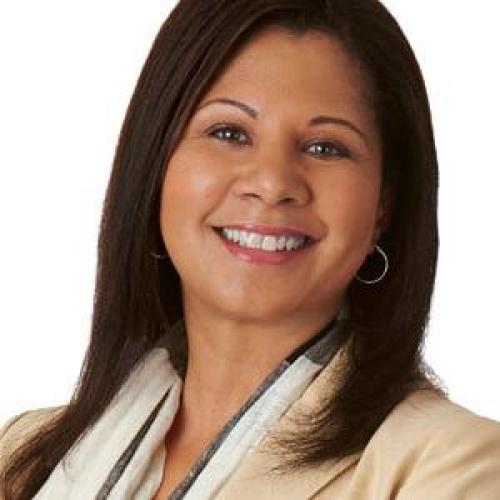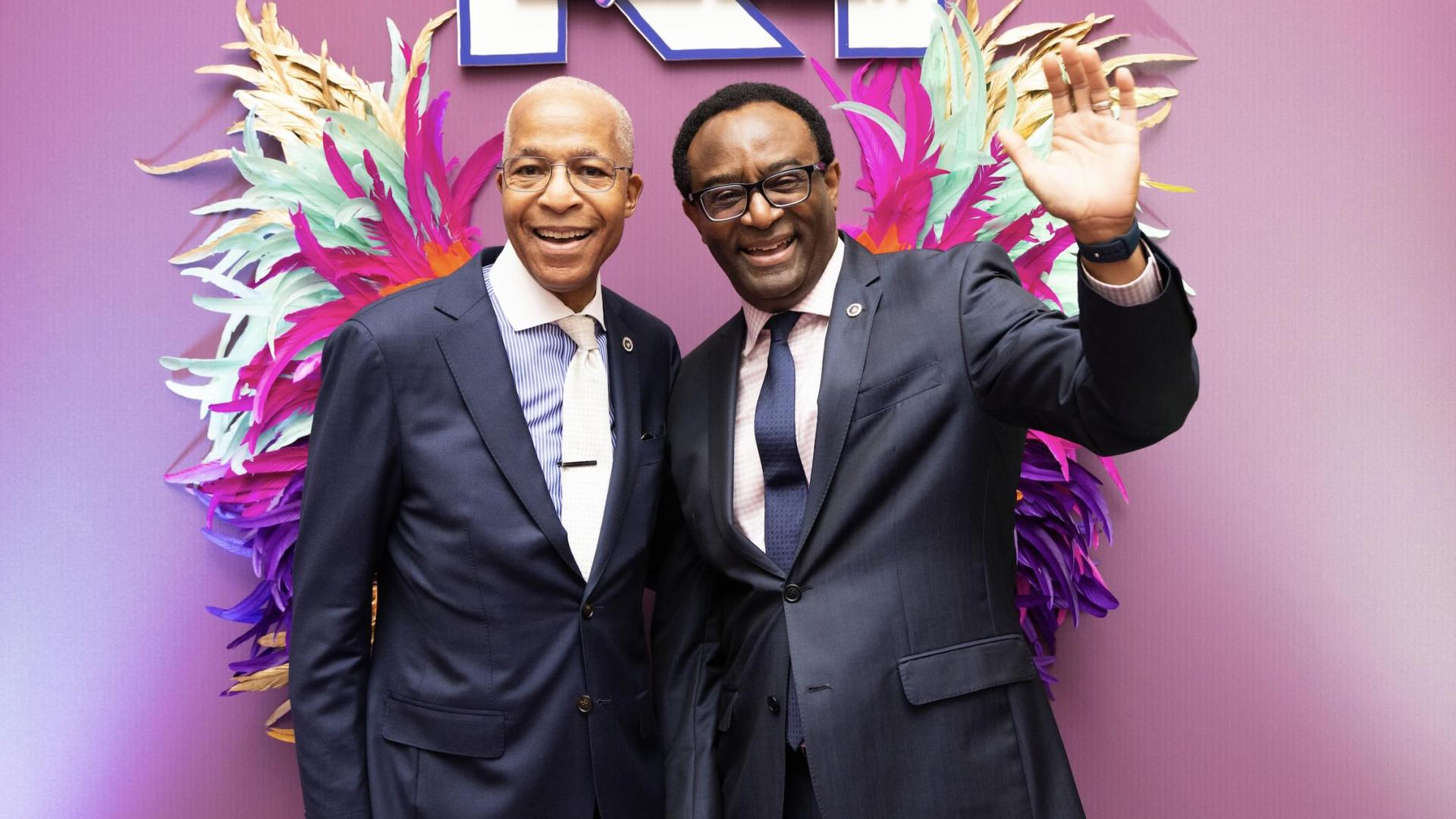Doctor of Philosophy (Ph.D.)
Mechanical and Aerospace Engineering
University of Virginia
1995

Sonya T. Smith, Ph.D., is the Executive Director of the Research Institute on Tactical Autonomy, University Affiliated Research Center (RITA UARC). She joined the Howard University faculty in 1995 and is the first tenured female faculty member in the Department of Mechanical Engineering. Smith obtained her Ph.D. in Mechanical and Aerospace Engineering from The University of Virginia (UVA) in 1995 and was also the first African-American woman to do so. In 2010 she became the first woman promoted to the highest academic rank of Professor (full) in this department and the following year 2011 became the first women appointed as Mechanical Engineering Department Chair at Howard University.
At Howard University, she established the Applied Fluids-Thermal Research Laboratory (@FTERLab), an interdisciplinary theoretical and computational research group. Her research has received support from various organizations, including NSF, NIH, NASA, DOD, and private industry.
Dr. Smith's notable achievements in the field of engineering have received widespread recognition. In 2021, she was honored as a Fellow of the American Academy of Arts and Sciences. Additionally, she holds prestigious positions in various organizations. She was elected as the president of Sigma Xi: The Scientific Research Honor Society in FY21, and she is a Fellow of the American Society of Mechanical Engineers (ASME) and an Associate Fellow of the American Institute of Aeronautics and Astronautics (AIAA). Dr. Smith's professional affiliations also include membership in the American Physical Society (APS), the American Society of Engineering Education (ASEE), the Society of Women Engineers (SWE), and the National Society of Black Engineers (NSBE). Furthermore, she actively serves on the U.S. National Committee on Theoretical and Applied Mechanics (USNC/TAM) and the Space Technology Industry-Government-University Roundtable at the National Academies. Notably, in 2021, she was selected as an MLK Visiting Faculty Member in the Department of Aeronautics and Astronautics at the Massachusetts Institute of Technology.
Dr. Smith's research has been widely published and presented at national and international conferences. Her work has garnered numerous awards, recognizing her contributions to the engineering community. Through her leadership roles in organizations such as the ASME Foundation, where she currently serves as Chair, she continues to advocate for opportunities students for in STEM fields.
Dr. Smith’s leadership of the Research Institute for Tactical Autonomy (RITA) University Affiliated Research Center (UARC) represents a transformative force in advancing national defense capabilities through cutting-edge research and workforce development. As Executive Director, she has strategically positioned RITA at the forefront of autonomy research, fostering interdisciplinary collaboration across academia, industry, and government. Under her guidance, RITA has accelerated innovation in mission autonomy, human-machine teaming, and AI-enabled decision-making, while also cultivating a talent pipeline to address critical workforce gaps in national security. Her leadership ensures that the UARC not only delivers on high-priority defense objectives but also embodies inclusive excellence, creating opportunities for underrepresented communities to contribute meaningfully to the future of autonomous systems.
In addition to her professional achievements, Dr. Smith is deeply committed to mentoring students and young professionals. She has mentored and financially supported over 100 students in her research group at various academic levels, including postdoctoral, Ph.D., Master's, and Bachelor's. She recognizes the importance of providing support and guidance to the next generation of scientists and engineers. Through her mentorship, she aims to inspire others to pursue their passions in STEM and break down barriers to success in the field.
Mechanical and Aerospace Engineering
University of Virginia
1995
Mechanical and Aerospace Engineering
University of Virginia
1991
Mathematics
Valdosta State University
1986
Read: Aerospace America | Meet the New AIAA Diversity Working Group Chair, Sonya Smith
Read: University of Virginia | The Esteemed Professor Sonya T. Smith, Trailblazer and University of Virginia School of Engineering Alumna
Read: Air force Material Command | AFRL chief scientists welcome HBCU partners to advance tactical autonomy
A Computational Model of Vestibular Fluid Response to Human Body Rotation
A computational model was developed to study the response of vestibular fluid to body motions, relating eye movement to vestibular displacement. The response in the semicircular canals (SCCs) and otolith organs were approximated as a torsional pendulum and a forced wave equation, respectively. The results of the math model were found to be consistent with results found in previous models. The results of the model will also be compared to those found experimentally using VALUS, a rotational platform updated to be used for vestibular testing.
Role of Particle Size to Channel Thickness Ratio on Performance of Nanofluids in Micro-Channels
Experimental and numerical investigations were conducted to explore the viability of single-phase nanofluids for microchannel cooling. The experiments were conducted with water/ethylene glycol-based nanofluids to investigate the thermal conductivity enhancement.
In support of MARR-M, 37 statistically sound regressions models representing the entry, descent and landing (EDL) process as a test case was developed using RSM. Each model involved 152 variables and variable combinations. A 95% confidence interval of the output data from each model was compared to the 95% confidence intervals of the Mars Viking I based Entry, Descent and Landing (EDL) process.
Hybrid-MCX-1, BWB and 777 Aircraft Comparison
This research paper seeks to push the envelope of innovation with a brand new perspective on how we view air travel — redefining the Why, What and How. It explores novel concepts such as Boeing Blended Wing Body (BWB) aircraft shown in, which does not follow the conventional Tube and Wing (TAW) configuration.
Simulation of the Response of the Inner Hair Cell Stereocilia Bundle to an Acoustical Stimulus
Here we show using our microfluidics model how each row of stereocilia and their associated tip links and gates move in response to an acoustical input that induces an orbital motion of the reticular lamina. The model confirms the crucial role of the positioning of the tectorial membrane in hearing, and explains how this membrane amplifies and synchronizes the timing of peak tension in the tip links.


